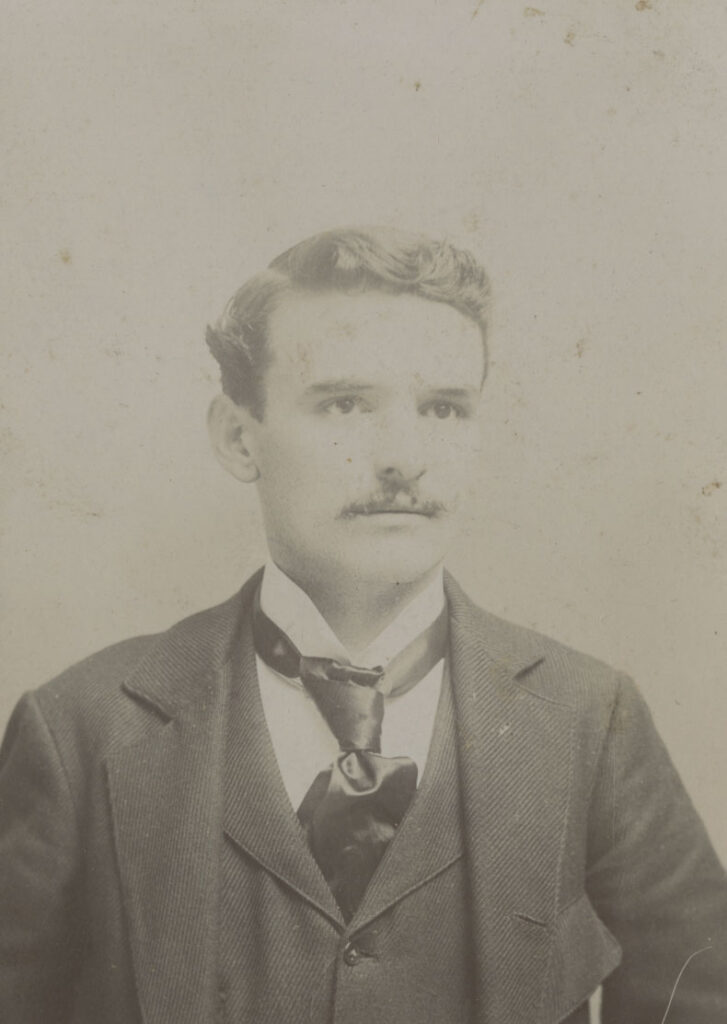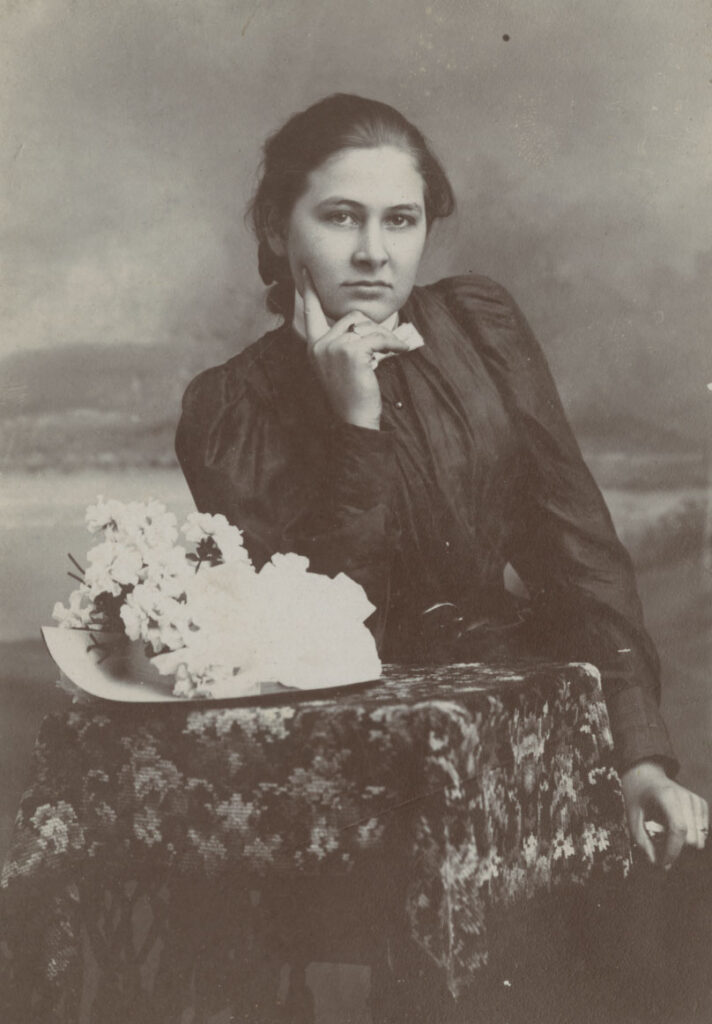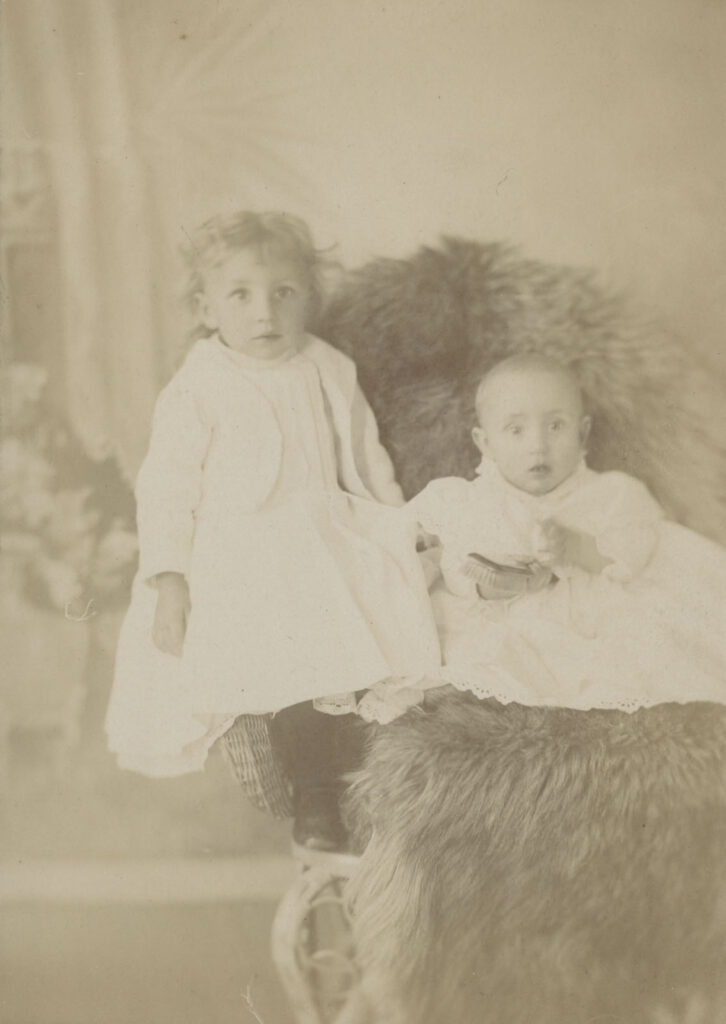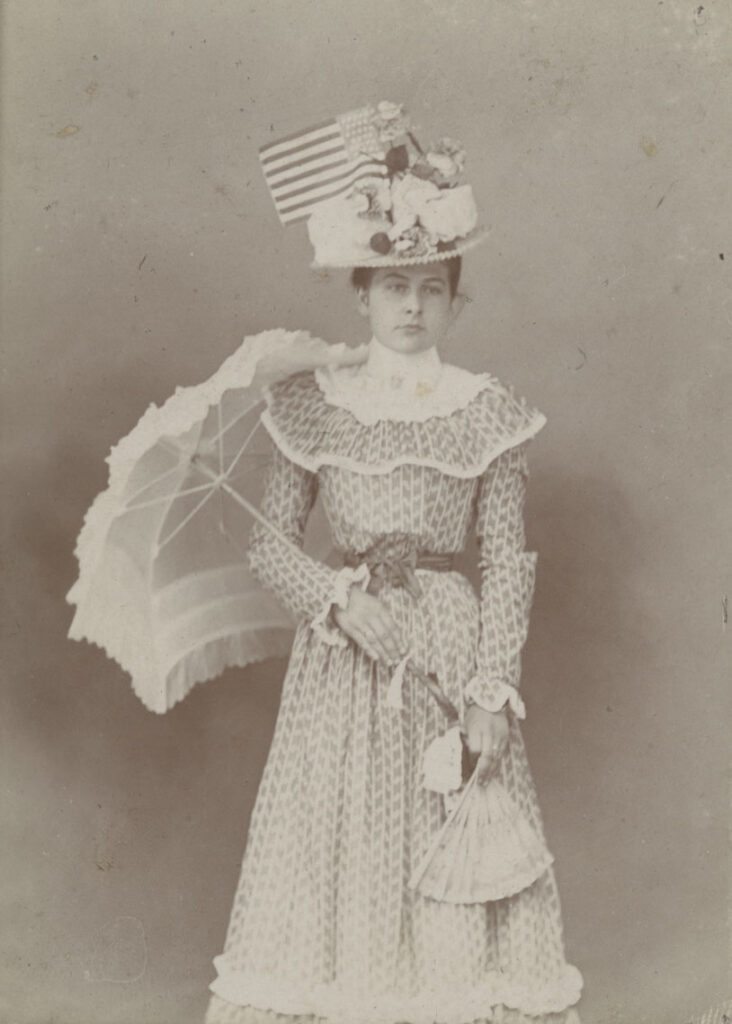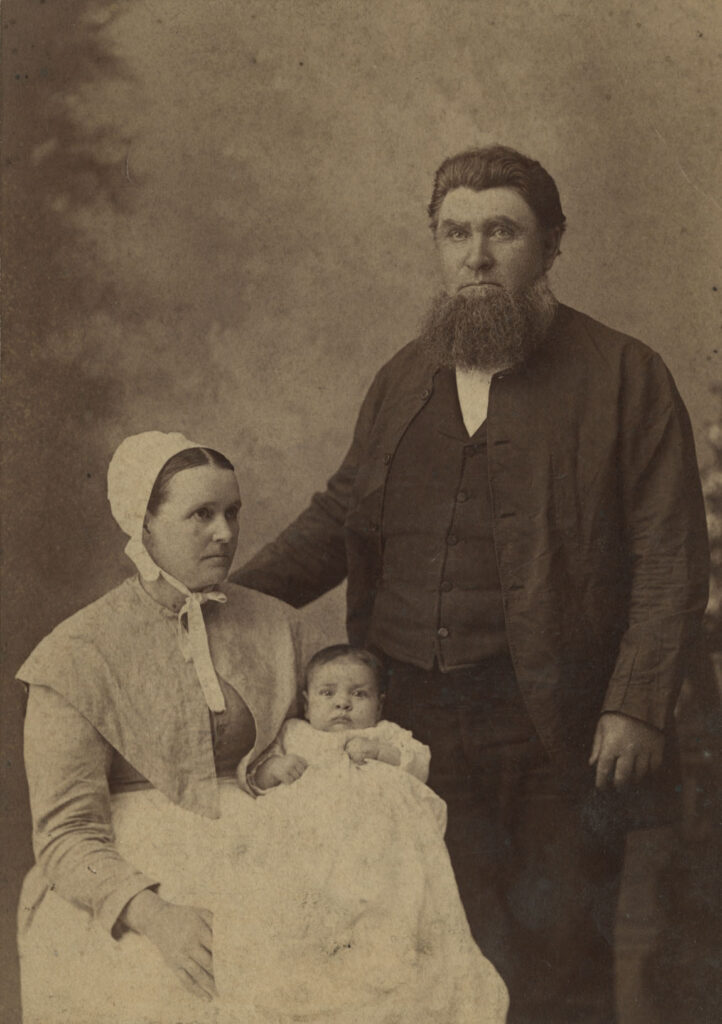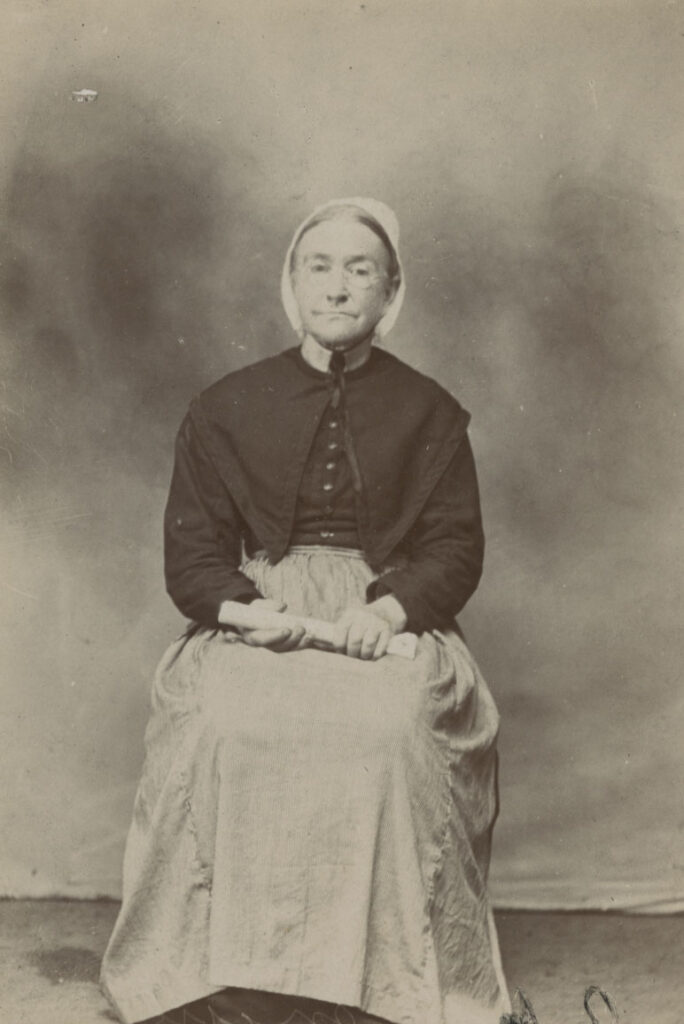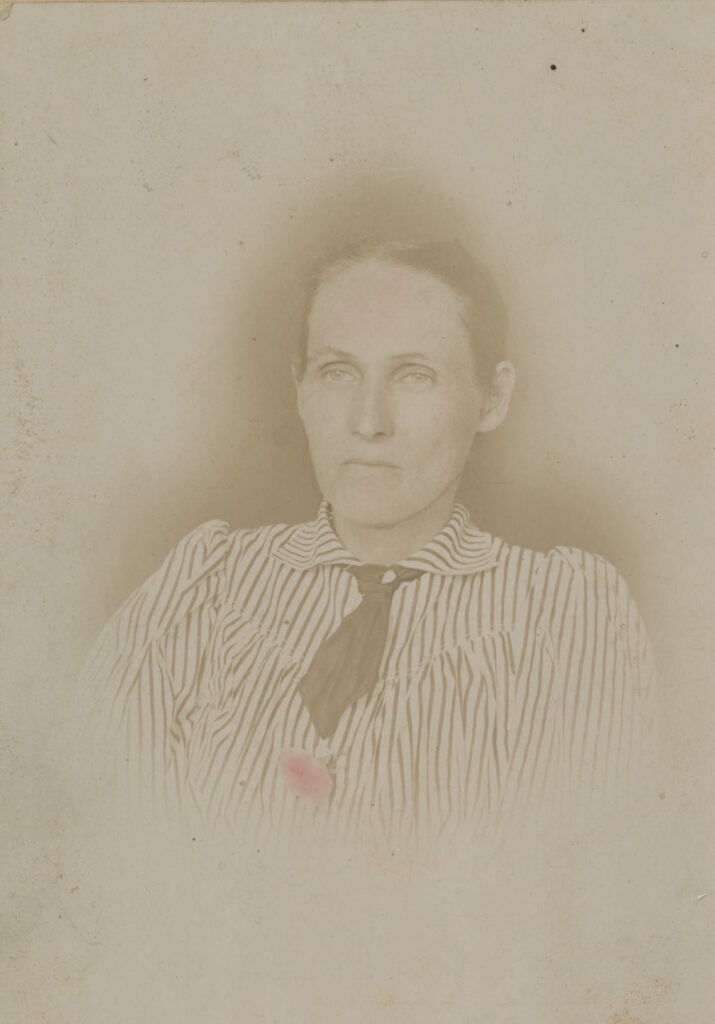Here in Special Collections we have any number of items easily recognized as rare or unique: a letter from Charles Lindbergh to Apollo XI astronaut Michael Collins; a diary written by former slave Jeffrey Wilson; a first edition of James Joyces Ulysses. These items are among those that even a casual visitor would see as exceptional treasures. We have other items, however, that might at first glance seem commonplace but are in fact surprisingly rare, and such is the case with this studio portrait of William Dabney Martin.
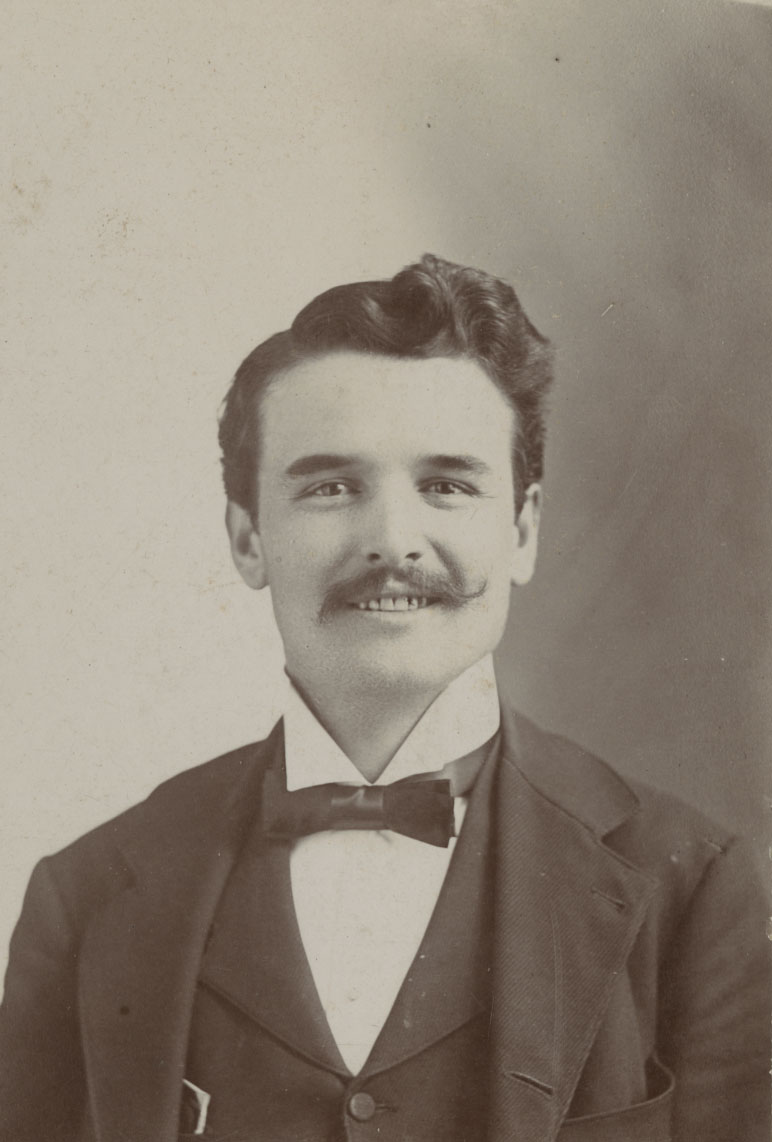
Who was he, this dapper young man with the unruly mustache, smiling back at us from more than a century ago? Unfortunately, we know nothing definite of Martin, whose photo is found within an elegant 19th-century album in the Price Family Collection (Ms2012-047), purchased by Special Collections at a local estate auction in 2012. Clues found within the album suggest that he was the same William D. Martin who was born in Virginia in 1873, a son of Samuel and Josephine Martin. The owner of a Rocky Mount, Virginia, jewelry store, Martin married Nora Powell, and the couple had five children. Census records indicate that William Martin died young, between 1913 and 1920; the latter year found Nora, a widow, living in Prince Edward County with four of her children.
Given that we know nothing about the subject of the portrait or the studio in which it was created, it seems that the picture deserves no more notice than any another 19th-century photograph. But it is Martins smile that makes the image remarkable.
While looking through any collection of 19th-century studio portraits, one might understandably reach the conclusion that our ancestors were a stern and humorless lot. In a collection of a hundred photos, we might find, at most, a dozen in which the subject wears any expression other than a frown or scowl. Within that dozen, we might find within the mix of faces an occasional neutral or kind expression, but a discernible upturn of the mouth is a rarity, and a grin is even more uncommon. To find a subject wearing a full-out, tooth-baring smile, like that of the Amazing Guy Who Smiled, is downright extraordinary.
Certainly the latter 19th century wasnt devoid of humor; the era gave us the wit of Mark Twain and the satire of Thomas Nast. The era’s humor, however, rarely seems to have crossed the threshold of the portrait studio. In examining the photos below, typical of the time and pulled from the same album in which Martins photo is housed, we might be forgiven for thinking that people of the late 19th century were overwhelmed by despair and dyspepsia.
One theory blames poor hygiene for the absence of smiles in old photos. The theory contends that few people had good teeth, and the frowns were a way to hide an unflattering feature from posterity. It hardly seems likely, though that self-consciousness would have motivated nearly everybody to frown at the photographer. Moreover, the hygiene theory doesnt account for the dearth of even close-mouthed smiles.
Others claim that the tendency toward frowns may be attributed to the long exposure times required by early photography. Anybody whos had to hold a smile for more than a few seconds for a camera can attest to how quickly it becomes a strain. In the earliest days of studio portraiture, long exposure times certainly contributed to stilted poses and a lack of spontaneity. By 1880, however, advances in technology had eliminated the problem of long exposure times. Still the frowns persisted.
It seems likely that social customs of the day provided the most compelling reason for portrait subjects ill-humored appearances. Though studio photography quickly grew in popularityby the late 1800s even small towns had at least one portrait studiothe process and expense of portraiture continued to make it a significant event, and it was not one to be frivolously wasted. In a letter to the Sacramento Daily Union, Twain wrote, A photograph is a most important document, and there is nothing more damning to go down to posterity than a silly, foolish smile caught and fixed forever. Twains views reflected Victorian-era codes of conduct that considered open displays of emotion as unseemly and something in which only by the coarse, the drunken, and the foolish engaged. And so, because nobody wanted to be remembered by posterity as a grinning idiot, smiles were largely discouraged in the portrait studio.
Societal changes and the advent of personal cameras, particularly Kodaks Brownie, greatly loosened strictures on photographic conventions, and spontaneity became much more the norm. Some decades later, as film gave way to digital cameras and smartphones, the values of the Victorian era vis–vis photography were completely reversed. If the novelty and expense of 19th-century studio portraiture led to frozen frowns, then the ubiquity and negligible expense of digital photography naturally led to such 21st-century phenomena as the duckface, a trend that would certainly have had most Victorians sternly spinning in their graves. But William Dabney Martin–non-conformist, iconoclast, rebel, smiler–may have understood.
